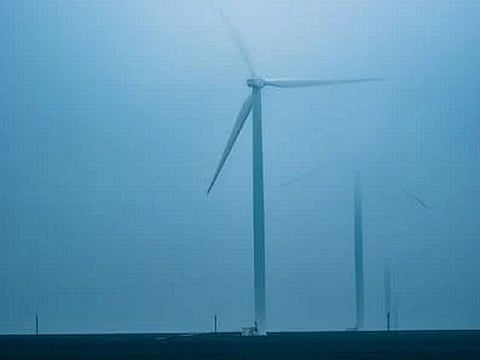Can developing nations decarbonise their electricity?
Without breakthroughs in storage and low-carbon energy, fossil fuels use will continue

Decarbonising electricity is easier said than done. While the West has been fervently pushing the developing world to transition to low-emission electricity production, the reality on the ground tells a different story. Despite the rhetoric and commitments, the path to decarbonisation is fraught with economic, infrastructural, and investment challenges.
According to the Statistical Review of World Energy (2024), global electricity production is predominantly derived from coal, accounting for 34.77% of the total. Natural gas followed, contributing 22.89% to global electricity production. Hydroelectric power and nuclear energy made up 13.91% and 10.13% respectively. Wind energy contributed 8.31%, while solar power accounted for 5.78%. Oil was responsible for 2.29% of the electricity production. Bioenergy and other renewables, excluding bioenergy, contributed 1.70% and 0.21%, respectively.
However, these numbers obscure a critical reality: while the world appears to be transitioning from high-carbon emission sources of electricity to low-carbon alternatives, lower-middle-income countries are bucking the trend. Global electricity production from high carbon emission sources like coal and oil has decreased between 2015 (year of Paris Climate Agreement) and 2023, with coal’s share dropping from 38.66% to 35.51% and oil’s share from 4.66% to 2.67%.
Also Read: A gendered lens on global disease burden
Also Read: Urban planning in the age of climate crisis
Conversely, lower-middle-income countries have seen a significant increase in these sources. In these countries, coal production rose by 40.81% (from 1194.23 TWh to 1681.44 TWh) and gas production by 24.98% (from 766.92 TWh to 958.44 TWh) from 2015 to 2022. Despite substantial global growth in renewable energy sources such as wind and solar, lower-middle-income countries are increasingly relying on high carbon emission sources, highlighting a divergence in energy trends.
What are the reasons for this divergence? First, lower-middle-income countries often face significant economic and infrastructural challenges that make it difficult to transition away from fossil fuels. These countries rely heavily on coal and gas for electricity, economic stability, and job creation.
The energy sectors in these countries are critical for local economies, providing significant revenue and employment opportunities. For instance, in Nigeria, the government has declared the 2020s the “Decade of Gas,” emphasising gas as a key driver for economic growth and energy provision.
Decarbonise emerging economies
Second, the substantial upfront investment required for renewable energy infrastructure is another issue. Many lower-middle-income countries cannot afford these investments without external assistance. Although international funding and technical support are crucial, their availability and adequacy vary, leaving many countries dependent on their existing fossil fuel infrastructure.
The World Bank estimates that trillions of dollars will be needed annually to decarbonise emerging economies, yet much of this financing must come from the private sector, which remains hesitant without robust de-risking mechanisms and standardised climate assessment
While the Loss and Damage Fund was announced to provide financial assistance to climate-vulnerable countries, progress has been slow. Operationalised at COP28 with initial pledges from countries like the UAE and Germany, contributions fall short of the required amounts, exemplified by the US’s insufficient pledge of $17.5 million given its historical emissions.
Despite efforts to operationalise the fund at COP28, substantial work remains to make it fully functional and adequately funded. The economic costs of climate change for developing countries are projected to reach between $290 billion and $580 billion annually by 2030, highlighting the urgent need for more significant financial commitments and effective governance structures.
A third of our electricity comes from low-carbon sources. However, the majority is still generated from fossil fuels, predominantly coal and gas. Nuclear and renewables account for only about one-fifth. Over the past decades, the balance between fossil fuels and low-carbon electricity sources has remained relatively unchanged. A decline in nuclear energy has offset the progress made in renewables; nuclear declined almost as much as renewables gained.
Reliant on fossil fuels
Third, the analysis and prescription of energy transition often ignore the issues in renewable energy systems in developing countries that arise out of the inherent intermittency of sources like wind and solar. This intermittency makes electricity from these sources extremely expensive during non-production periods. Thus, there is the need for reliable backup solutions, often still reliant on fossil fuels.
The costs associated with ensuring continuous supply are exacerbated by inadequate battery storage capacity, which is insufficient to cover periods of low renewable output. For instance, during winter, Germany experiences wind droughts lasting an average of five days, requiring extensive battery storage, far beyond current capabilities.
The developed world has not been able to solve this problem for itself, let alone for the developing world. Estimates by Fekte et al. (2023) indicate that achieving 100% renewable electricity with sufficient backup in the US would require storing almost three months’ worth of electricity annually, a capacity that currently stands at just seven minutes. According to an analysis by Bjorn Lomborg, for the US to have 3 months of backup, it would have to invest 5 times its current GDP. Imagine the cost for developing countries.
Moreover, frequent battery replacements and the environmental impact of disposing of used renewable equipment further complicate the transition to a fully renewable system.
Without major breakthroughs in storage technology and alternative low-carbon energy sources, relying on fossil fuels to maintain a stable electricity supply is an unavoidable reality. Isn’t it the height of hypocrisy for the West to demand that the developing world embrace costly renewable energy while they themselves have prospered for decades on the back of cheap coal?
Although nuclear energy could address both stability and carbon emission concerns, it remains prohibitively expensive, inaccessible to many developing and developed countries, and stigmatised globally after the Fukushima disaster.
Aditya Sinha is Officer on Special Duty, Research, Economic Advisory Council to the Prime Minister of India. Views Personal.
Sign up for the Daily Briefing
Get the latest news and updates straight to your inbox



